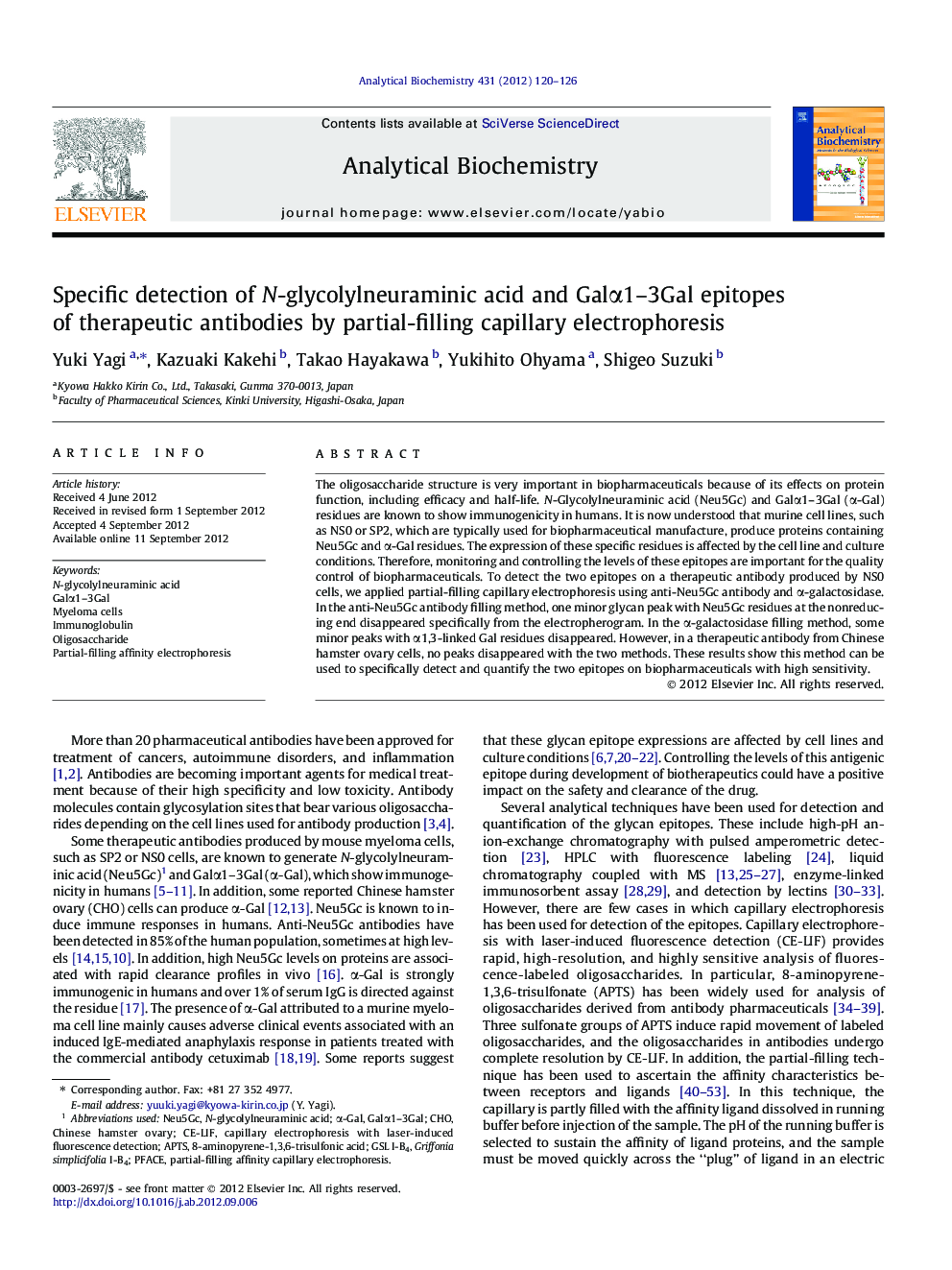| Article ID | Journal | Published Year | Pages | File Type |
|---|---|---|---|---|
| 10533256 | Analytical Biochemistry | 2012 | 7 Pages |
Abstract
The oligosaccharide structure is very important in biopharmaceuticals because of its effects on protein function, including efficacy and half-life. N-glycolylneuraminic acid (Neu5Gc) and Galα1-3Gal (α-Gal) residues are known to show immunogenicity in humans. It is now understood that murine cell lines, such as NS0 or SP2, which are typically used for biopharmaceutical manufacture, produce proteins containing Neu5Gc and α-Gal residues. The expression of these specific residues is affected by the cell line and culture conditions. Therefore, monitoring and controlling the levels of these epitopes are important for the quality control of biopharmaceuticals. To detect the two epitopes on a therapeutic antibody produced by NS0 cells, we applied partial-filling capillary electrophoresis using anti-Neu5Gc antibody and α-galactosidase. In the anti-Neu5Gc antibody filling method, one minor glycan peak with Neu5Gc residues at the nonreducing end disappeared specifically from the electropherogram. In the α-galactosidase filling method, some minor peaks with α1,3-linked Gal residues disappeared. However, in a therapeutic antibody from Chinese hamster ovary cells, no peaks disappeared with the two methods. These results show this method can be used to specifically detect and quantify the two epitopes on biopharmaceuticals with high sensitivity.
Related Topics
Physical Sciences and Engineering
Chemistry
Analytical Chemistry
Authors
Yuki Yagi, Kazuaki Kakehi, Takao Hayakawa, Yukihito Ohyama, Shigeo Suzuki,
